If you're an artist considering taking on illustration commissions, it's essential to have a solid agreement in place to protect both yourself and your clients. A well-crafted commission agreement outlines the project details, payment terms, and copyright ownership to avoid misunderstandings down the line. This template will guide you through creating a clear, professional document that addresses all necessary aspects of the commission process. Ready to dive into the specifics? Let's explore the key components that will help you create a successful illustration commission agreement!
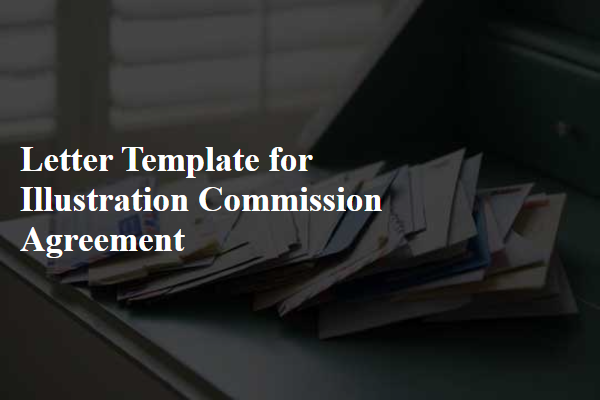
Scope of Work
An illustration commission agreement outlines the scope of work to be performed by the artist, detailing specific tasks, deliverables, and deadlines. For instance, the agreement might specify the creation of three full-color illustrations for a children's book, with a total of 12 pages. Each illustration could involve depicting characters and scenes from the narrative, requiring the artist to adhere to character designs provided by the author. Additionally, the agreement may state that the artist must deliver initial sketches within four weeks, followed by revisions based on feedback, leading to final images delivered in high-resolution digital format by a set deadline, such as March 1, 2024. Payment terms might also be included, describing a total fee of $1,500, divided into an upfront deposit and subsequent payments upon reaching specific project milestones.
Payment Terms
An illustration commission agreement typically includes detailed payment terms outlining the financial responsibilities of both the client and the artist. For example, the total commission fee might be specified based on factors like complexity or size, with an upfront deposit required, often around 30% to 50% of the total. Payment methods should be mentioned, whether via bank transfer or online platforms like PayPal, ensuring security for both parties. A clear timeline for the final payment should be established, often due upon delivery or approval of the completed artwork. Additional terms may cover late payment penalties or refund policies, providing clarity and protection.
Intellectual Property Rights
Intellectual property rights (IPR) govern the ownership and use of creative works, such as illustrations created by artists for clients. IPR safeguards the original expression of ideas while specifying the usage rights conferred to clients and artists. In the context of an illustration commission agreement, it is crucial to outline the rights of both parties explicitly. For instance, the artist retains copyright ownership, allowing for potential future sales or licenses, while the client receives a limited license to use the artwork for specified purposes, such as promotional materials or personal use. Clear delineation of usage rights can prevent disputes, ensuring that the artist's creative intentions are respected while granting the client the necessary rights to utilize the illustrations effectively. This framework can encompass details such as duration of use, media forms, and geographic limitations, thereby protecting both parties' interests in the intellectual property framework.
Revisions and Approval Process
In an illustration commission agreement, the revisions and approval process is crucial for ensuring that the final artwork aligns with the client's vision. Upon completion of the initial draft, the artist submits the illustration for review via email or a designated platform. The client, within a specified timeframe, such as 14 days, provides feedback and requests any revisions, which may involve changes to colors, composition, or details. Typically, the agreement allows for a set number of revision rounds, often two or three, before additional fees may apply. After incorporating feedback, the artist sends the revised illustration for final approval. The client reviews the modifications and must confirm approval in writing, allowing the artist to prepare the final version for delivery. Timelines establish clear expectations, ensuring the project progresses smoothly and to satisfaction.
Termination Conditions
Termination conditions in an illustration commission agreement refer to the specific circumstances under which either party, the client or the illustrator, can end their professional relationship. Clear termination conditions protect both parties and provide guidelines on scenarios such as failure to meet deadlines, breaches of contract, or changes in project scope. For instance, if the illustrator fails to deliver illustrations by established deadlines, particularly over a period of 30 days, the client may reserve the right to terminate the agreement. Conversely, if the client significantly alters the project requirements midway, leading to additional workload, the illustrator may choose to cancel the contract. Additionally, circumstances such as force majeure events--unforeseen events like natural disasters affecting performance--may also outline termination protocols. Comprehensive termination conditions ensure mutual understanding and respect in a creative collaboration.
Letter Template For Illustration Commission Agreement Samples
Letter template of illustration commission agreement for commercial projects.
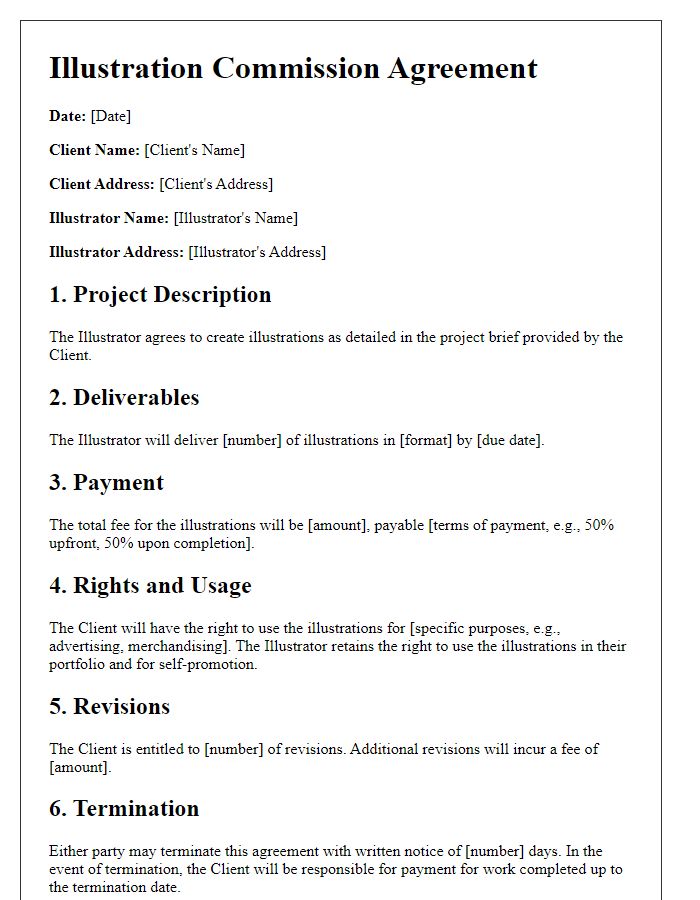
Letter template of illustration commission agreement for educational purposes.
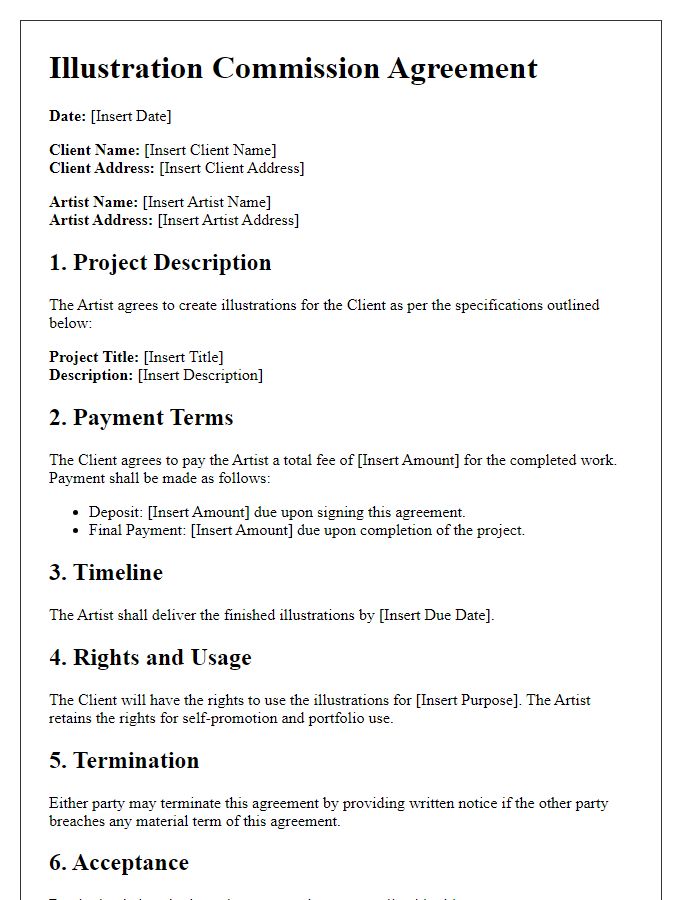
Letter template of illustration commission agreement for digital artwork.
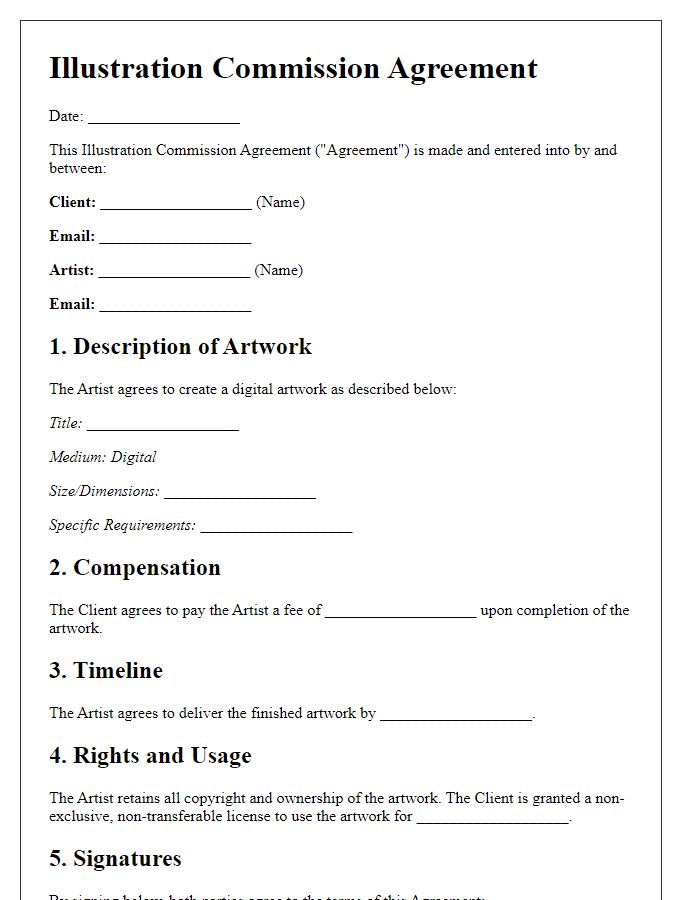
Letter template of illustration commission agreement for book illustrations.
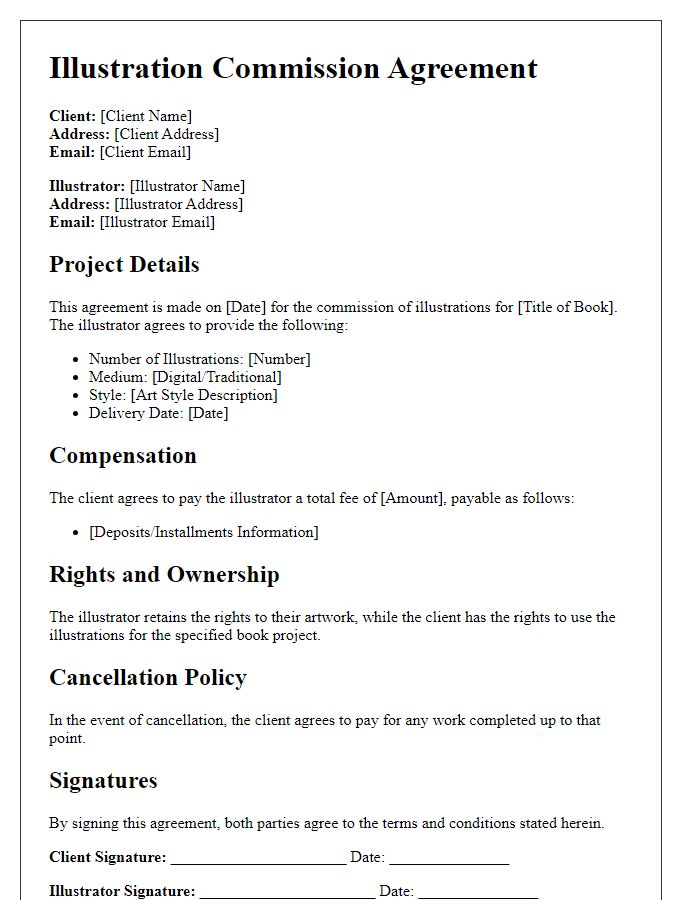
Letter template of illustration commission agreement for merchandise design.
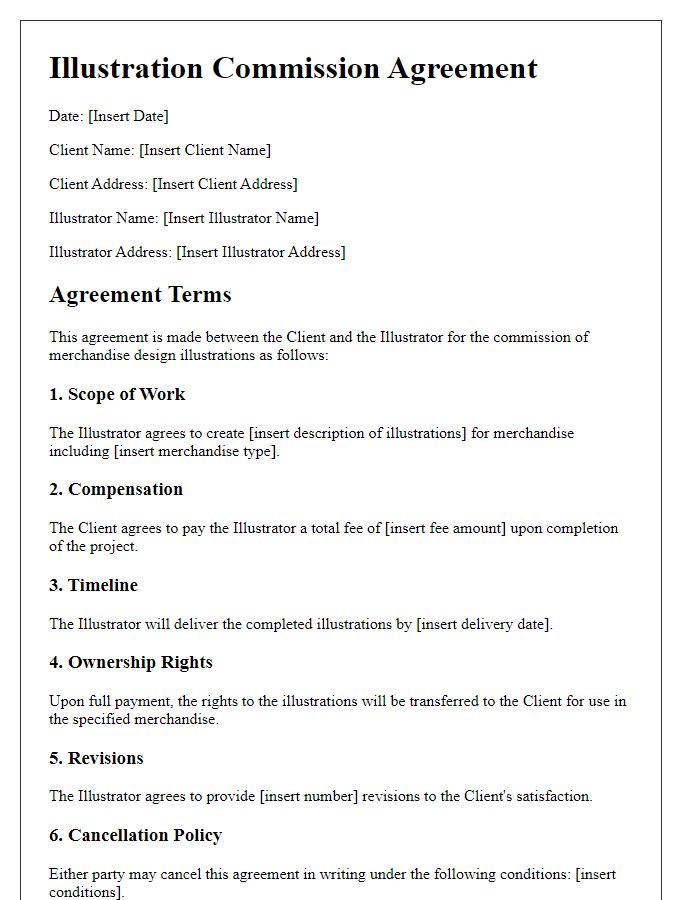
Letter template of illustration commission agreement for branding projects.
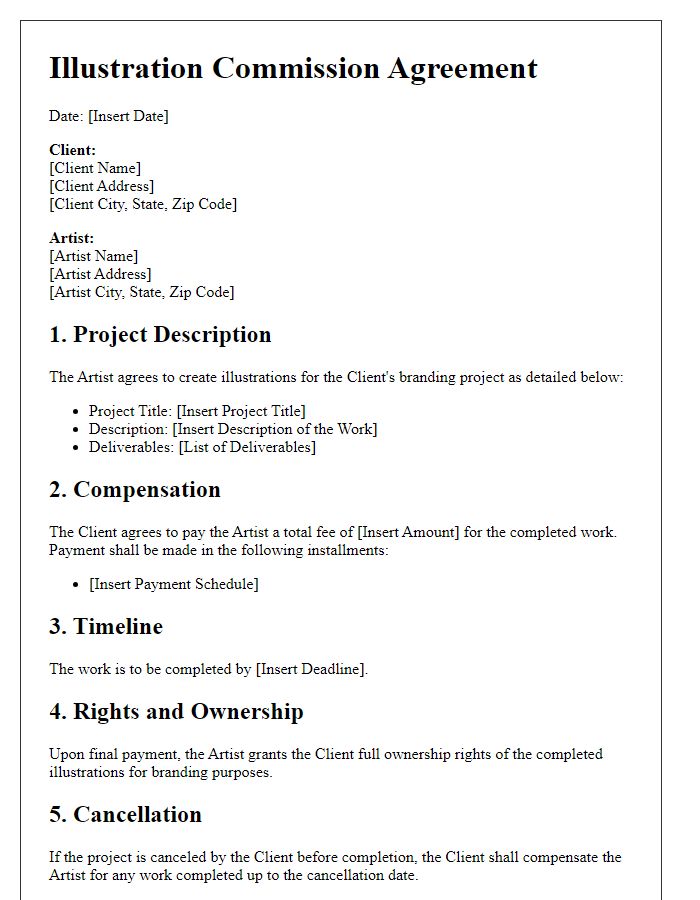
Letter template of illustration commission agreement for event promotions.
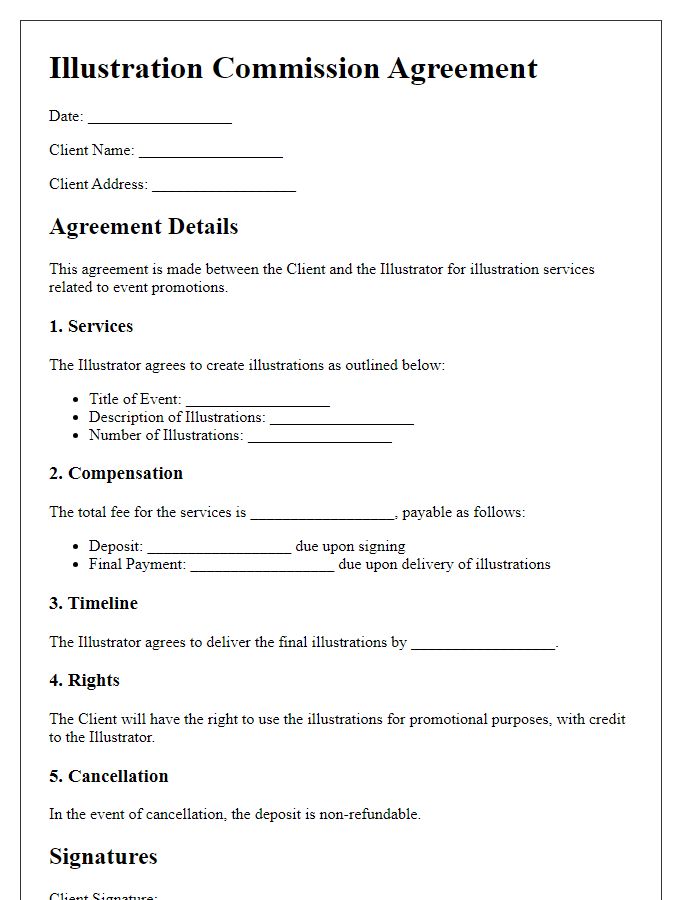
Letter template of illustration commission agreement for fine art prints.
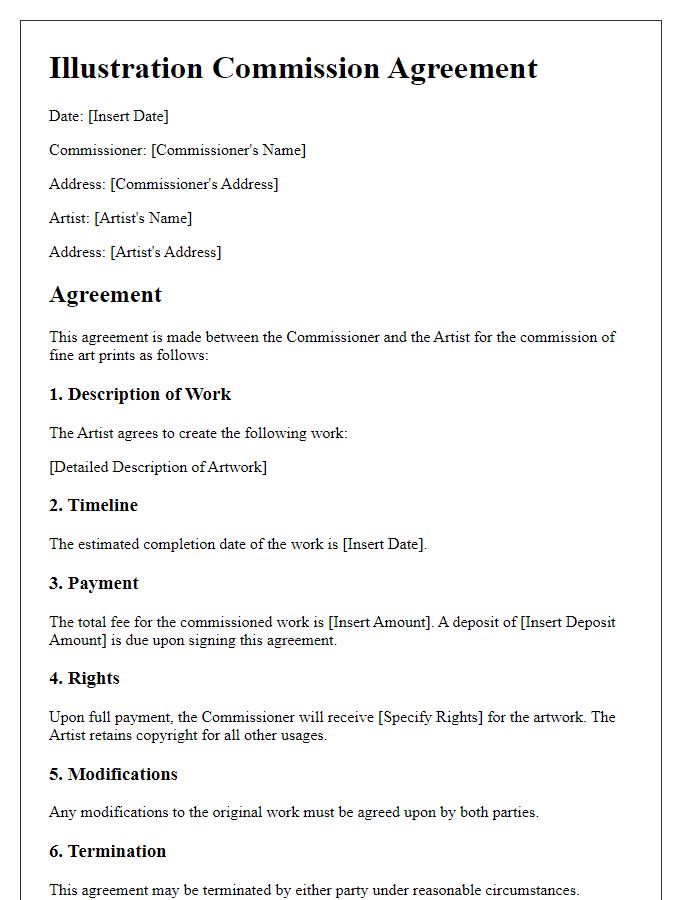

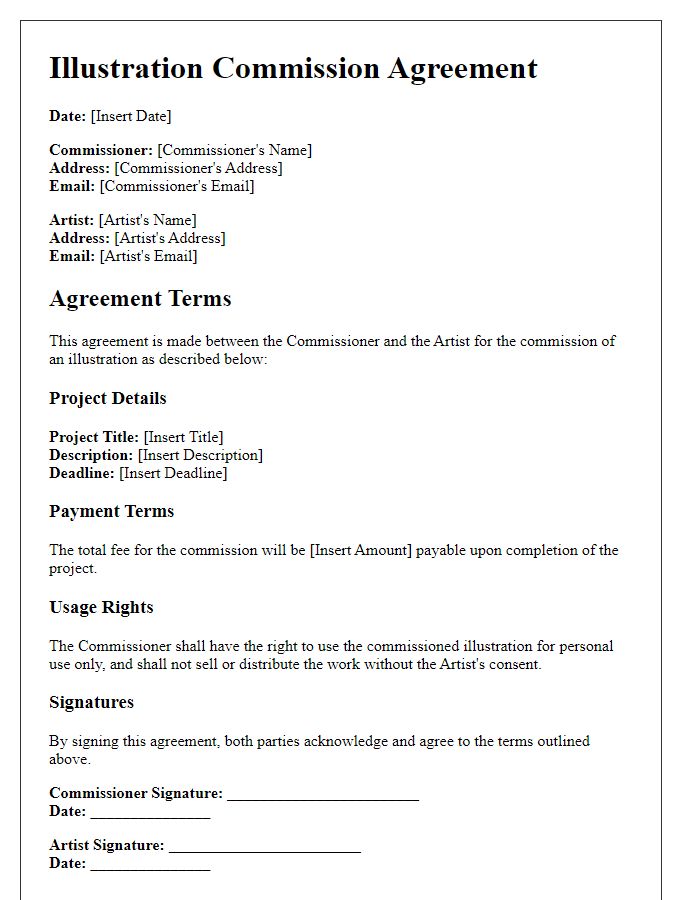
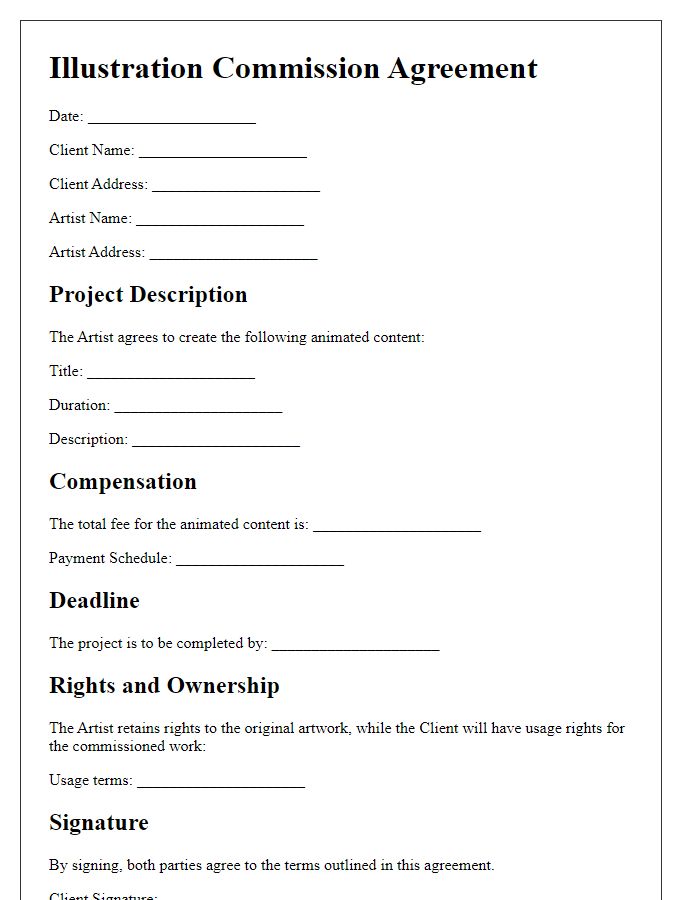


Comments